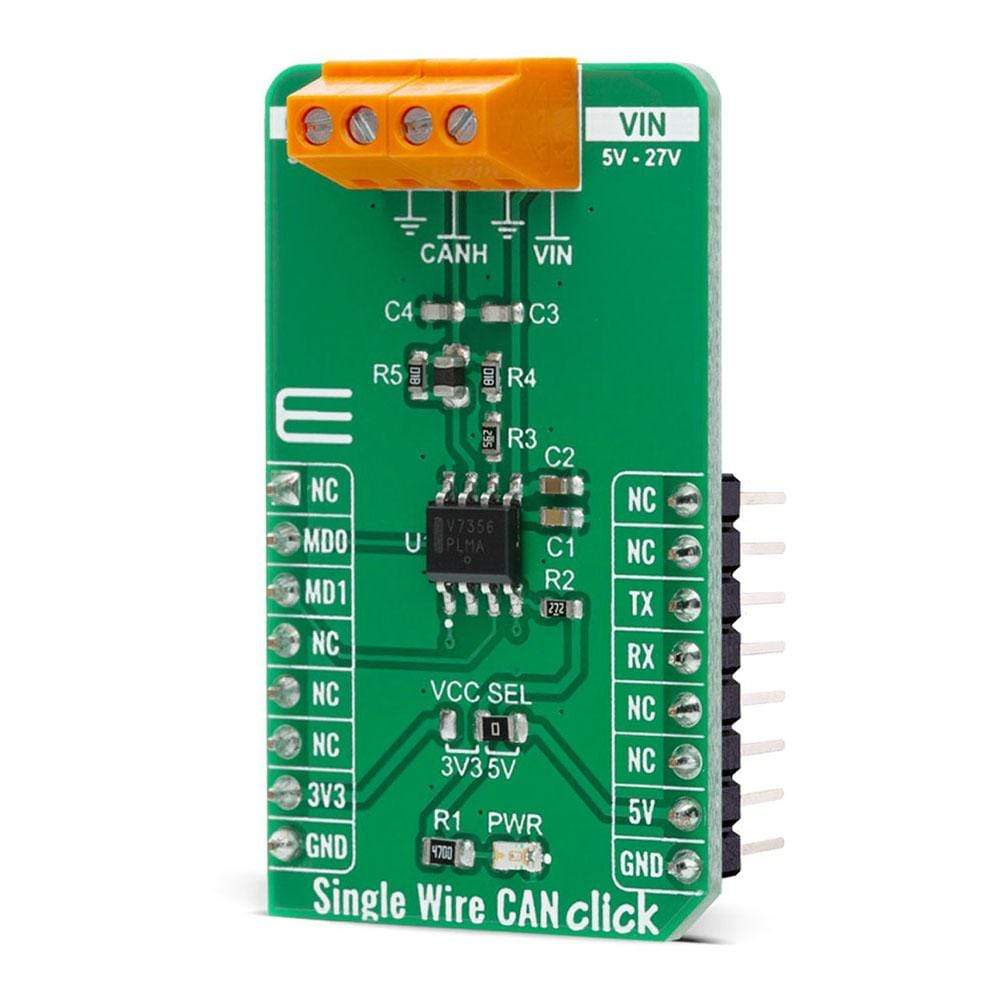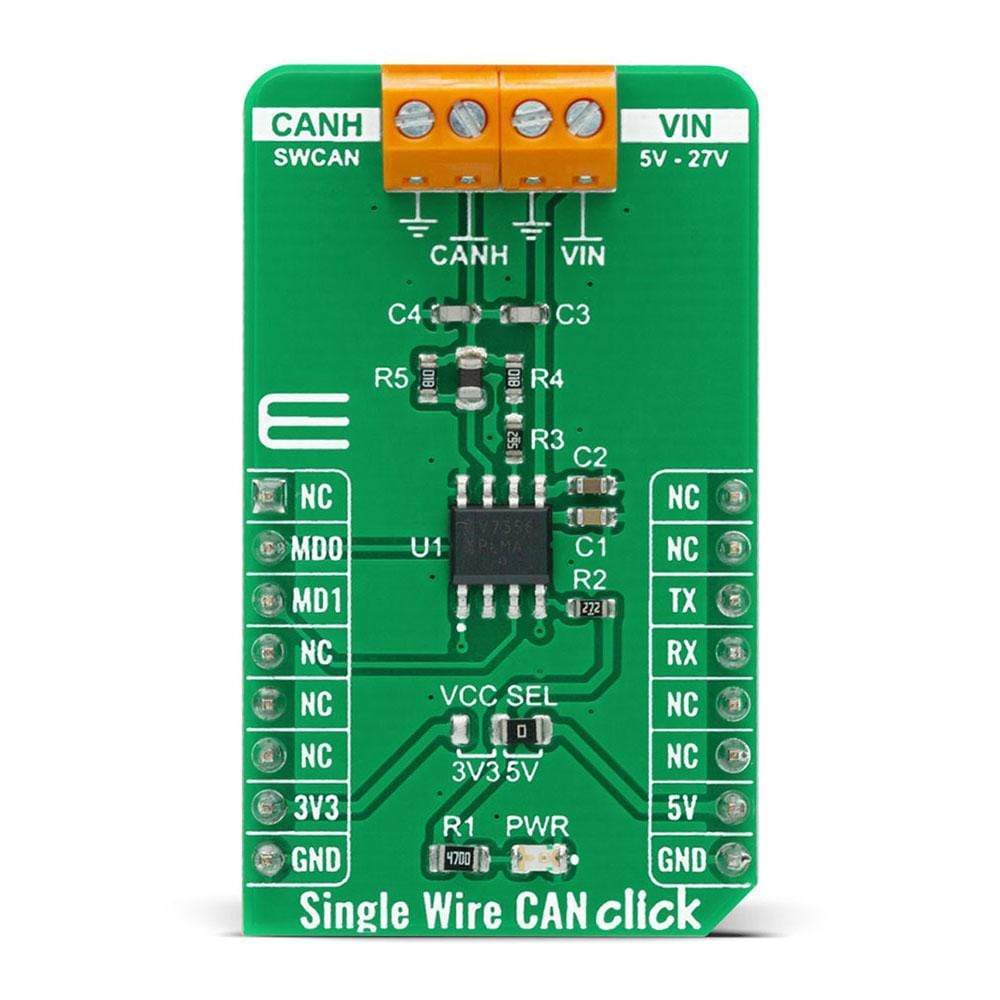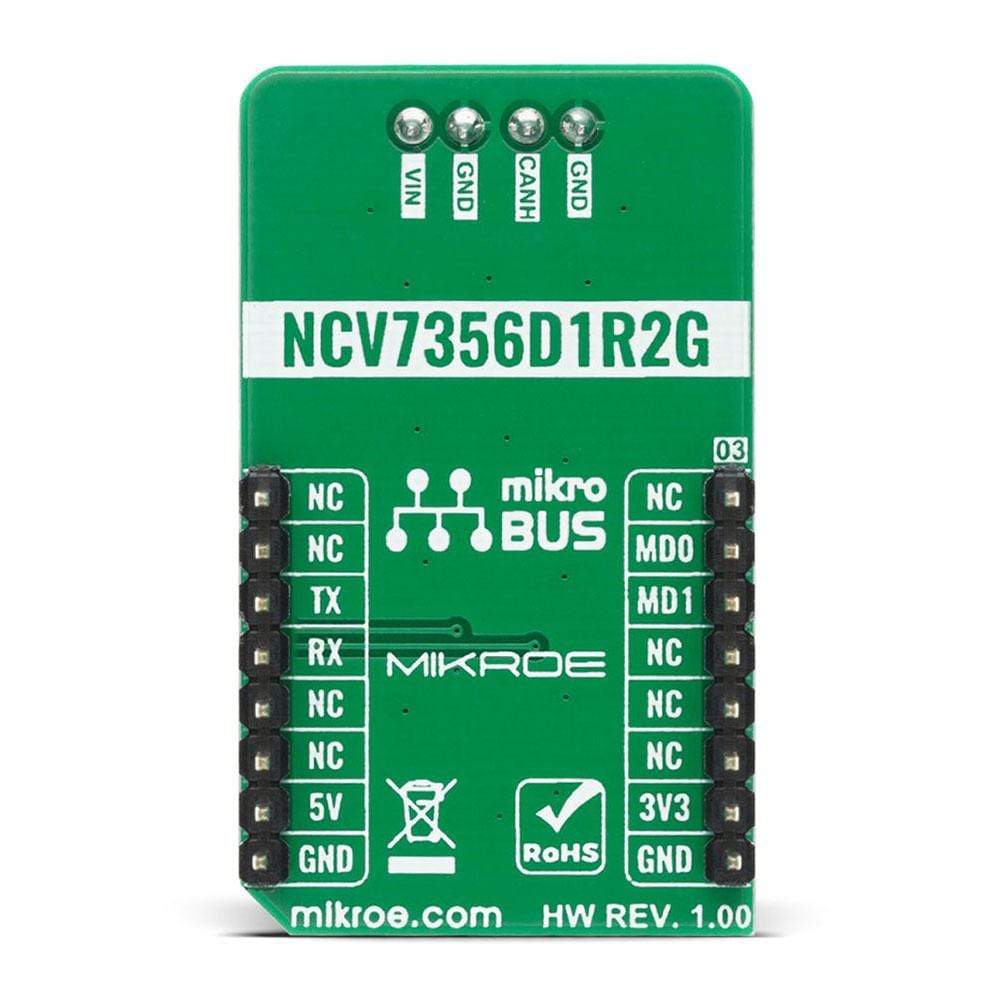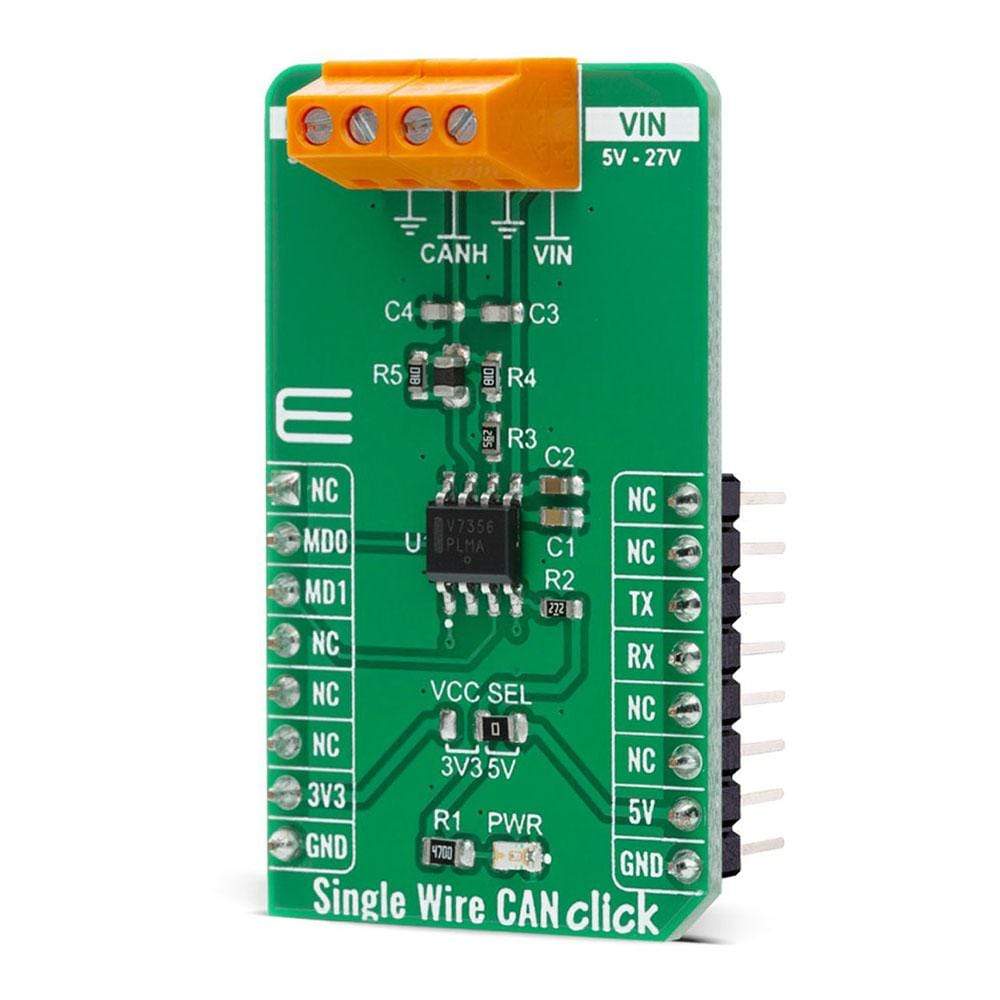
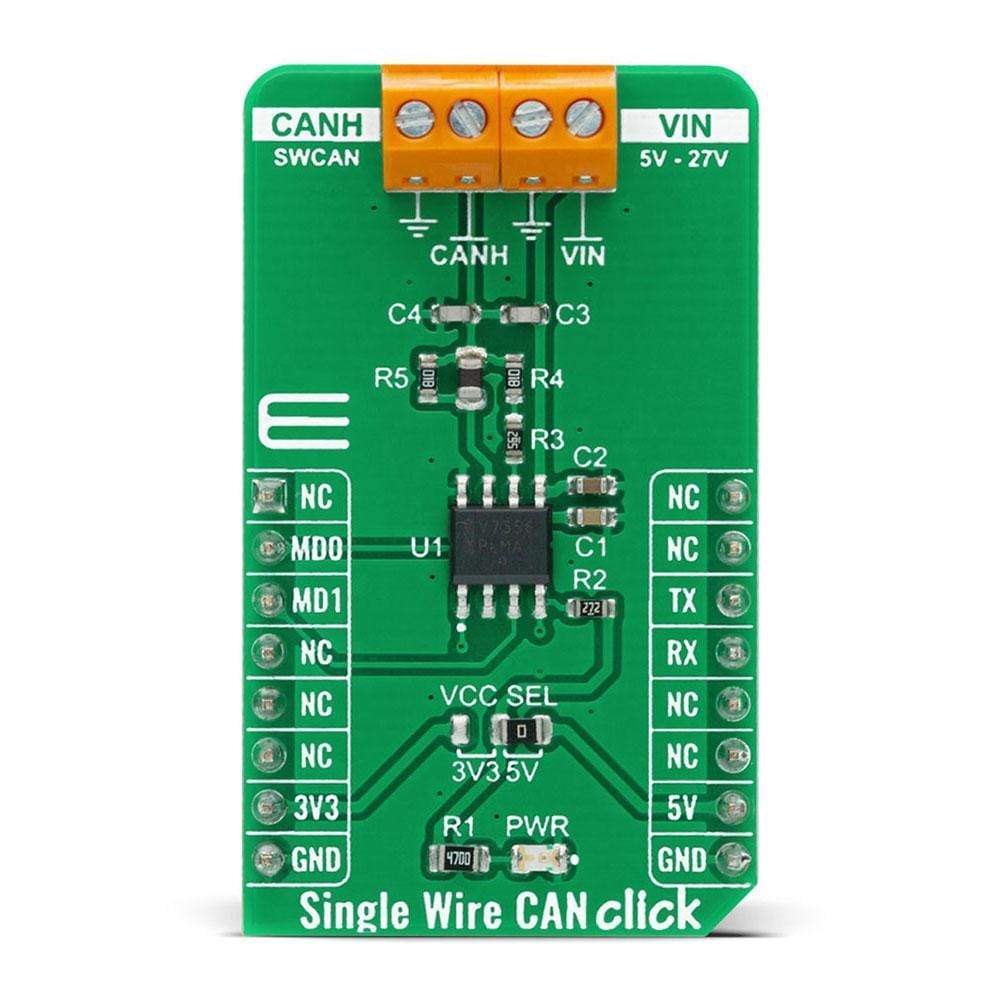
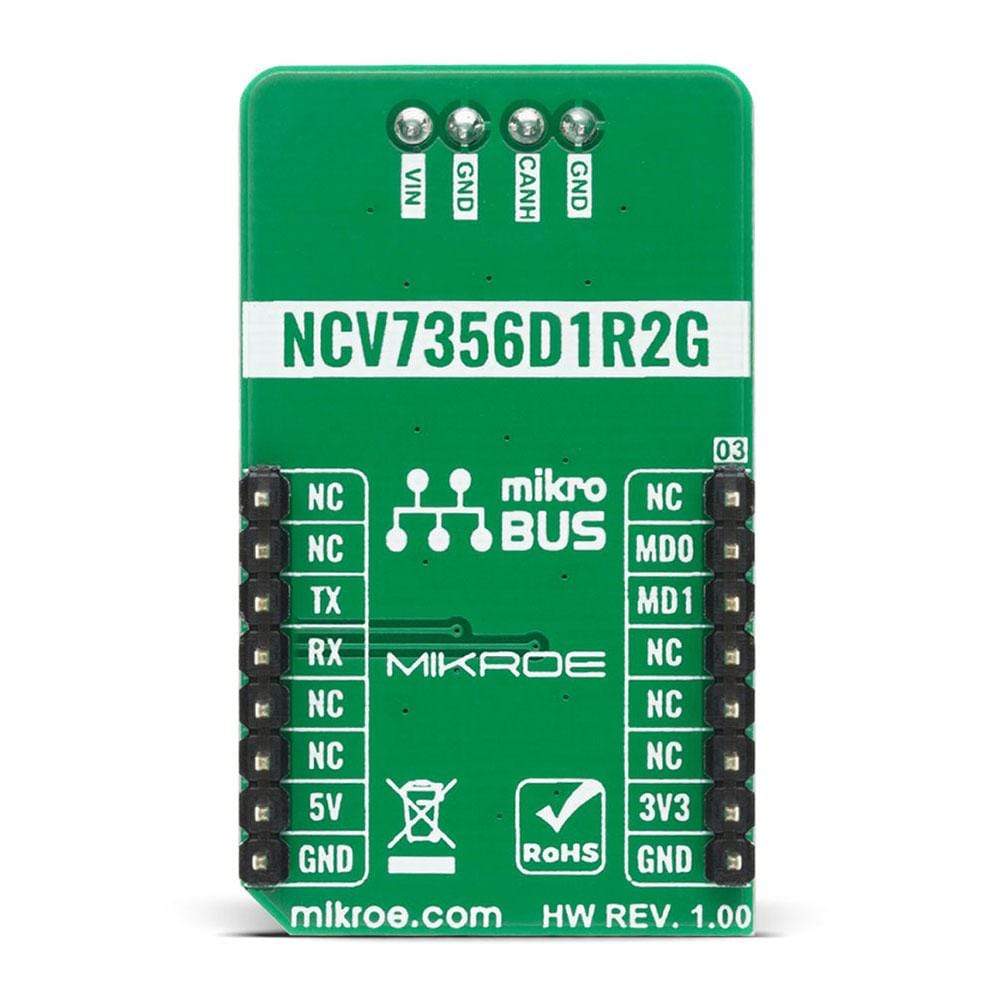
Overview
The Single Wire CAN Click Board™ is a compact add-on board that contains an IC for a single wire data link capable of operating with various protocols such as the Controller Area Network (CAN). This board features the NCV7356D1R2G, Single Wire CAN transceiver from ON Semiconductor, which operates from a supply voltage from 5V to 27V with bus speed up to 40 kbps. It supports many additional features like an under-voltage lockout, a timeout for faulty blocked input signals, output blanking time in case of bus ringing, and a very low sleep mode current. This Click Board™ can be used in industrial equipment, in-vehicle, and industrial networking, and in applications where the high data rate is not required and a lower data rate can achieve cost reductions.
The Single Wire CAN Click is supported by a mikroSDK compliant library, which includes functions that simplify software development. This Click Board™ comes as a fully tested product, ready to be used on a system equipped with the mikroBUS™ socket.
Downloads
Das Single Wire CAN Click Board™ ist eine kompakte Zusatzplatine, die einen IC für eine Single Wire-Datenverbindung enthält, die mit verschiedenen Protokollen wie dem Controller Area Network (CAN) betrieben werden kann. Diese Platine verfügt über den Single Wire CAN-Transceiver NCV7356D1R2G von ON Semiconductor, der mit einer Versorgungsspannung von 5 V bis 27 V und einer Busgeschwindigkeit von bis zu 40 kbit/s betrieben wird. Es unterstützt viele zusätzliche Funktionen wie eine Unterspannungssperre, ein Timeout für fehlerhaft blockierte Eingangssignale, eine Ausgangsausblendzeit bei Busklingeln und einen sehr niedrigen Ruhestrom. Dieses Click Board™ kann in Industrieanlagen, Fahrzeugen und industriellen Netzwerken sowie in Anwendungen verwendet werden, bei denen die hohe Datenrate nicht erforderlich ist und eine niedrigere Datenrate Kostensenkungen erzielen kann.
Das Single Wire CAN Click wird von einer mikroSDK-kompatiblen Bibliothek unterstützt, die Funktionen enthält, die die Softwareentwicklung vereinfachen. Dieses Click Board™ wird als vollständig getestetes Produkt geliefert und ist bereit für den Einsatz auf einem System, das mit der mikroBUS™-Buchse ausgestattet ist.
| General Information | |
|---|---|
Part Number (SKU) |
MIKROE-4225
|
Manufacturer |
|
| Physical and Mechanical | |
Weight |
0.02 kg
|
| Other | |
Country of Origin |
|
HS Code Customs Tariff code
|
|
EAN |
8606027380242
|
Warranty |
|
Frequently Asked Questions
Have a Question?
Be the first to ask a question about this.

